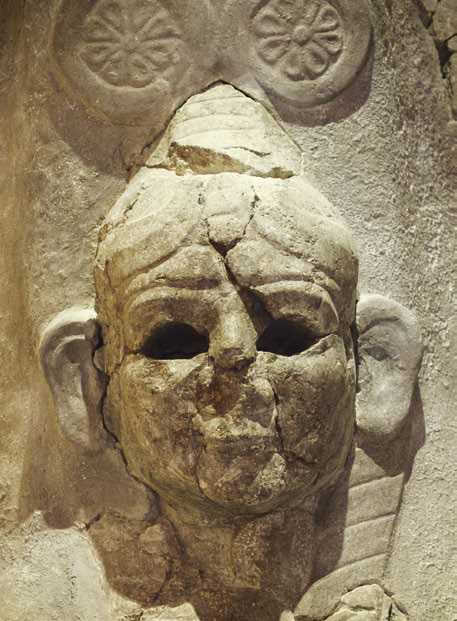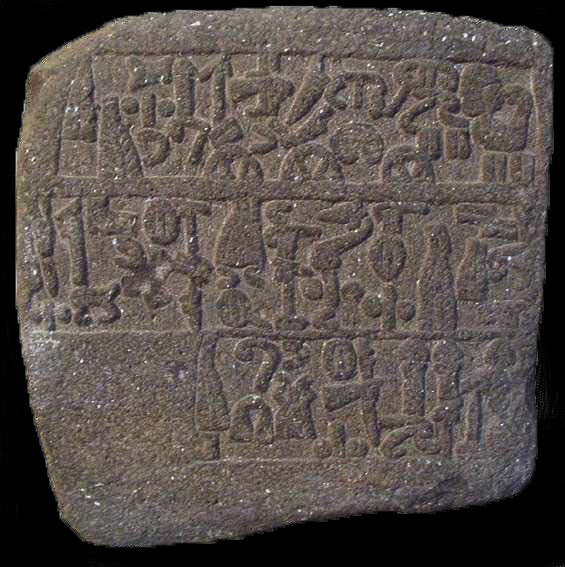
An ancient Indo-European people, identified by the Hebrew word 'et-hachitti and referred to 46x in the OT as well as another 14x as the descendants of Heth, the Hittites were at one time one of the most powerful nations in Middle East. Their empire stretched at one time from the Black Sea to Damascus in the south and all across Anatolia (now part of modern Turkey).
The Bible traces the origin of the Hittites to Canaan, the son of Noah (Gen 10:15, NIV), and together with the Jebusites, Amorites, Girgashites, Hivites and Perizzites were among the inhabitants of the land "flowing with milk and honey" that Israel would come eventually to occupy (Exo 3:8). Their presence in Palestine seemed to have been centered around Hebron; it was from one of them that Abraham bought the plot of land to bury his wife Sarah (Gen 23:1-23). Hittites figured among the mercenaries who made up part of David's army, among them whom was Uriah, the husband of Bathsheba, who—while David tried to implicate in his adultery with his wife—faithfully "slept at the entrance to the palace with all his master's servants and did not go down to his house" because, he said to David, "The ark and Israel and Judah are staying in tents, and my master Joab and my lord's men are camped in the open fields. How could I go to my house to eat and drink and lie with my wife? As surely as you live, I will not do such a thing!" (2 Sam 11:9-11). Their reputation as a people to be reckoned with was still evident in the 9th Cent when the Arameans, during a siege of Samaria, fled when they thought that Hittites were coming to the aid of the Israelites (2 Ki 7:6).

The so-called "Sphinx of Hattusa," unearthed in 1907.
The history of the Hittite power may be divided into two periods, the first is sometimes referred to as the First Dynasty of Babylon (1800-1600) and the second, in the years 1380-1200 BC, when the new empire was taken to its pinnacle of power by Suppiluliumas, with a capital at Hattusas (modern Bogazkale, Turkey), and ruling lands tham made up all of what is modern Turkey and parts of Syria. When the famous boy-pharaoh Tutankhamun died, his young widowed queen Ankhesenamon sent a delegation to Suppiluliumas with an urgent message:
My husband had died and not one son do I have. But of you it is said that you have many sons. If you will give me a son of yours he could be my husband, for how can I take one of my slaves and make him a husband and honour him?
Suppiluliumas delayed, wishing to ascertain the veracity of the proposal. By the time he made up his mind and sent a young prince on the way to Egypt, it was too late, for in the interim, an Egyptian stateman-priest named Aya had seized the throne and the queen. Had the young Hittite prince arrived, it was certain he would have been assassinated. A clash between the two superpowers, nonetheless, became inevitable. Egypt, in the person of Rameses the Great, and the Hittites represented by Suppiluliumas's successor, Muwatalli II, met in the well-known Battle of Kadesh (in northen Syria) about the year 1285 BC. The battle was fierce and furious with both sides suffering huge losses but neither power could be said to have won, and in the end the two empires signed a non-aggression pact. The Hittite empire, however, was not to last long. The so-called 'People of the Sea' were on the move and they soon swept over and wiped out the Hittites, leaving only pockets here and there, such as we see in the OT.
As the Hittite Empire expired, so too did all knowledge of them. Nothing was known about them except what the OT reports. The entry in the 1861 edition of the Encyclopedia Britannica, e.g., had only eight and a half lines on the subject, almost entirely a summary of what the OT has to say. And what the Bible has to say were often scoffed at as myths and legends. The first discovery that would lead to our modern appreciation of the ancient Hittites came in the early 19th Cent when the Swiss explorer John Burckhardt, the first European to 'discover' Petra, reported, among what he saw in Syria and Palestine, "a stone with a number of small figures and signs which appears to be a kind of hieroglyphic writing, though it does not resemble that of Egypt." Over the next century more and more Hittite artifacts came to light. The most important of these was the discovery of a major bilingual inscription in Karatepe (modern Egypt) by the German archaeologist and philologist Helmuth Bossert in 1947. As a result of the discovery archaeologists are now able to read Hittite documents, and what a world has been uncovered!

Hittite hieroglyphic.

Further Reading & Resources :
T. Bryce, The Kingdom of the Hittites. Oxford: Oxford University Press, 1998.
H. A. Hoffner, Jr., "Hittites," in A. J. Hoerth, G. L. Mattingly, and E. M. Yamauchi, eds., Peoples of the Old Testament World. Grand Rapids: Baker Books, 1994.
☰ F. F. Bruce, The Hittites and the Old Testament. London: Tyndale Press, 1947. pdf
☰ Harry A. Hoffner, "Some Contributions of Hittitology to Old Testament Study," Tyndale Bulletin 20 (1969): 27-55. pdf

©ALBERITH
011117lch